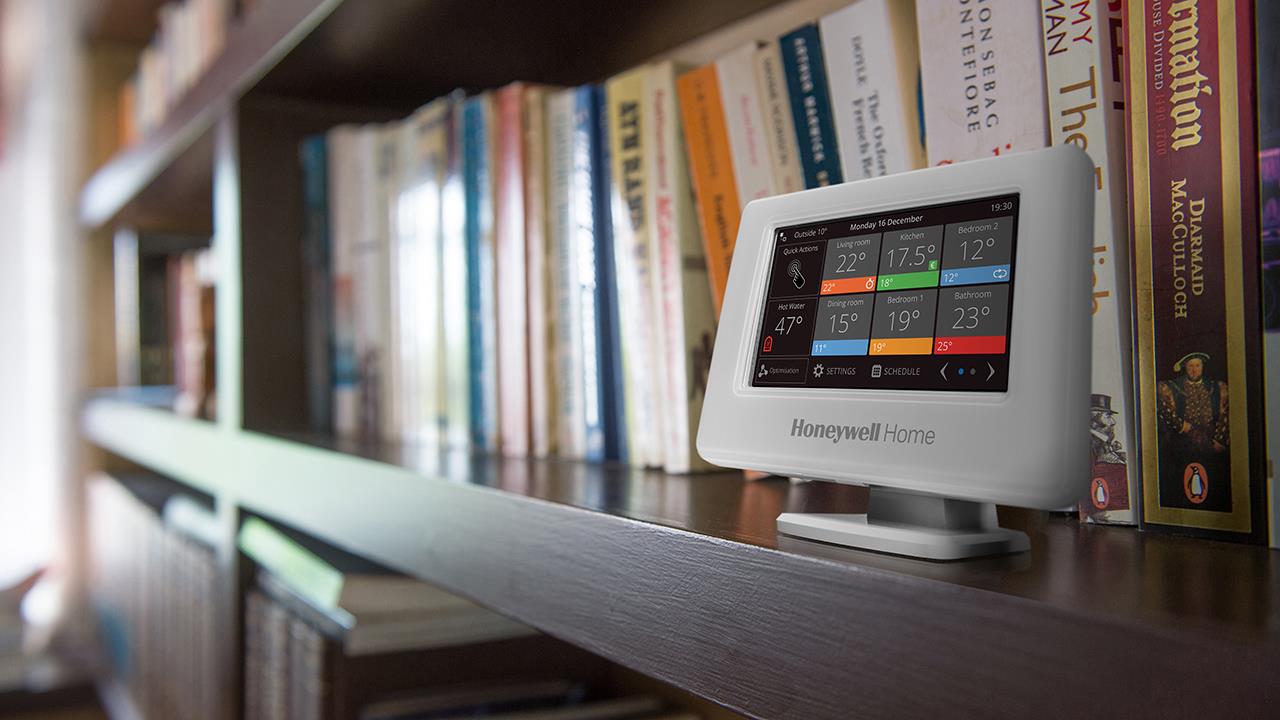

Rob Whitney, Senior Sales Development Specialist at Resideo, looks at the advanced features of heating controls to look out for and how installers can package up the benefits for their customers.
With the drive towards sustainability continuing to gain momentum among homeowners, installers will increasingly be expected to offer the solutions that can help play a part in achieving the goal of a greener tomorrow, as well being able to provide more immediate energy savings.
For installers, this presents the perfect opportunity to help put customers back in command of their heating system and unlock potential savings available of whichever heat source they opt for; be it a heat pump or boiler.
The next generation of the Honeywell Home evohome smart zoning system, for instance, has been developed to be an all-in-one, universal control that can work with boilers and heat pumps, learn to scale energy usage to avoid waste, and switch between warm and cool weather settings. But how do you present the benefits to homeowners?
Heat pump compatibility
With a target to install 600,000 heat pumps every year by 2028 set by the government as part of its ‘10-point plan for a Green Industrial Revolution’, and the plan to switch to this type of heat source in newbuilds by 2025, the technology is playing an increasing role in decarbonising heat in our homes.
Typically, a gas boiler takes about half an hour to heat a house, so it can run in quick bursts to provide heating for a short time if needed without significantly impacting on the energy bill, the boiler, or comfort levels.
As heat pumps work with lower system temperatures, they take a lot longer to warm up a property to the desired temperature. Also, a certain amount of flow needs to be maintained to the heat pump. If the flow rate drops below a threshold, a heat pump will stop operating regardless of what the controls ask for. So, selecting a control that can maximise the output of the heat pump is crucial to getting the best from the system.
Cooling functionality
As some heat pumps can cool as well as heat, cooling control will become a new application for those installing a smart control. The feature allows end-users to easily switch the system between heating and cooling mode, and installer to select which rooms are suitable for cooling. Low temperature water being circulated around the radiators or underfloor circuits absorbs excessive heat in the home and helps keep the rooms comfortable in summer.
Zoning
Due to the pandemic, we are now spending more time in our homes, meaning that heating demands are changing. A recent survey by Resideo of 2,000 homeowners found 37% would buy a smart thermostat to save money on energy bills and 24% said this would also enable them to have greater control over the temperature of their home. So, by having a smart zoning feature available, customers can control the temperature in rooms they aren’t using, therefore saving energy and money.
This functionality requires additional radiator thermostats to wirelessly measure and control temperatures in individual spaces, which offers installers a valuable opportunity to customers. In the case of evohome, up to 12 different room temperatures (or zones) can be created across the home without the need to disturb decor.
This can work for those installing a heat pump too. However, a heat pump which regularly switches on and off cannot run efficiently, leaving the homeowners unable to reap the full financial benefits of this technology. So, if a property with a heat pump is split into different zones care will need to be taken to avoid ‘over-zoning’ and ensure it that the amount of heat called for through the controls stays within the modulation capabilities of the heat pump.
Smart weather control
As we head into summer months and the outside weather warms up, naturally the need to heat our homes reduces. Yet, we all know temperatures can drop during transition months, leaving us with an unexpected chilly snap.
Advances in technology mean homeowners can rely on smarter control offerings to navigate temperature fluctuations during seasonal transition periods. Here the control monitors outside weather temperatures and communicates with the heating system to adjust the temperature within the property, so that the system is running as efficiently as possible.
Conclusion
With government targets currently aiming for a reduction in CO2 emissions by 78% of 1990 levels by 2035, the way we heat and cool our homes and generate hot water is going to change rapidly over the next few years and beyond. By having a universal solution to control how appliances consume energy across multiple zones, and, importantly, being able to sell these features to customers, installers are well placed to help homeowners save money and energy, while at the same time helping move heating systems towards being more sustainable now and in the future.
If you'd like to keep up-to-date with the latest developments in the heating and plumbing industry, why not subscribe to our weekly newsletters? Just click the button below and you can ensure all the latest industry news and new product information lands in your inbox every week.